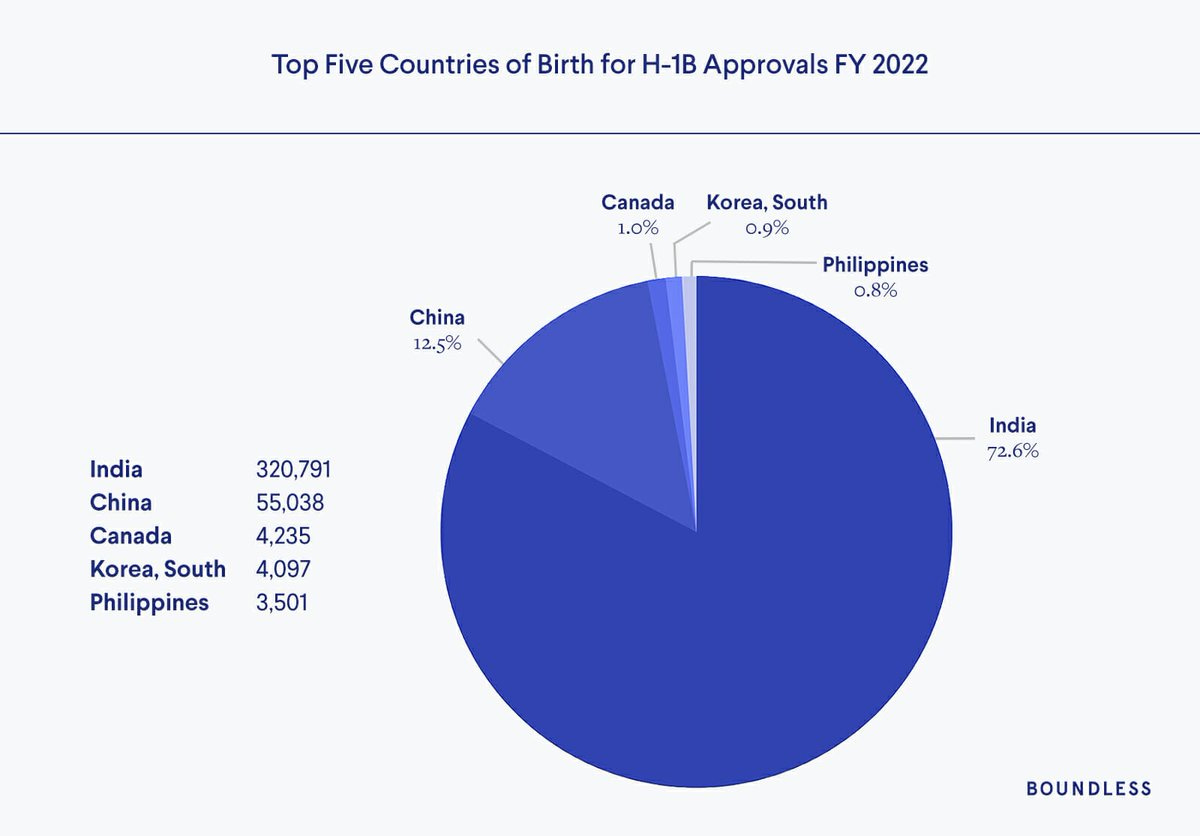The H-1B program is about corruption and fraud, not ideology
Instead of selecting for the “best and brightest,'" the program facilitates the interests of a power cartel of middleman agencies.
Proponents of the H-1B program argue it’s an essential opportunity to import workers with underrepresented occupational skills into America. Detractors say it serves to undermine and displace the American worker.
Please check out our amazing sponsors and support The Dossier
Don’t forget to stay hydrated!
Don't let the heat drain your energy. Stay cool and hydrated with NativePath Hydrate - a powerful electrolyte drink mix to hydrate you as nature intended. It tastes WAY better than the big brands and it’s much healthier too.
But before we even engage in an ideological debate between conservatives, liberals, libertarians, and socialists about the merits of H-1B, we must first recognize that the program, in its current 2024 form, is corrupt and fraudulent beyond recognition. Over the last 35 years, massive bureaucratic institutions and middlemen have formed to hijack H-1B, establishing a monopoly that wildly overrepresents certain groups of people over the rest of the world.
First, a bit of history:
The H-1B visa program was established under the Immigration Act of 1990. It was designed to enable U.S. employers to temporarily hire foreign workers in specialized occupations requiring at least a bachelor's degree or its equivalent. Initially, the program was intended to fill skill gaps in the U.S. workforce, particularly in sectors like technology, engineering, medicine, and education, where there was a perceived shortage of American talent.
The annual cap for H-1B visas started at 65,000, but the program evolved significantly over the years. In 1998, the American Competitiveness and Workforce Improvement Act increased the cap to 115,000 visas, responding to the booming tech industry's demand for skilled labor. This was followed by further adjustments; for instance, the H-1B Visa Reform Act of 2004 added 20,000 visas for foreign nationals holding a master's or higher degree from U.S. universities.
Over the years, various legislative efforts have ostensibly aimed to reform the program. The H-1B Visa Reform Act of 2009 increased fees to fund retraining programs for American workers, but critics say it failed in its implementation.
The H-1B program saw its cap reached almost immediately after applications opened in the early 2000s due to high demand, leading to a lottery system for allocation. One well-known lottery-busting tactic from middleman hiring companies in India, which continues to this day, involves submitting multiple applications under different aliases for the same individual to increase their chances of selection.
Today, the H-1B visa allows holders to work in the U.S. for up to three years, extendable to six and has provisions for "dual intent," allowing visa holders to pursue permanent residency.
According to recent data and analyses, the breakdown of H-1B visas by country of origin shows a significant concentration among two nations, with India and China leading the numbers:
India dominates the H-1B approvals list, accounting for almost three-quarters of all H-1B visa recipients.
With a billion and a half people, India is still wildly overrepresented in the “talent pool,” especially because the H-1B pipeline in India tends to exclude 95 percent of the country.
India's caste system is a complex social structure that has shaped the country's society for millennia. Rooted in ancient Hindu scriptures, the system originally divided people into four social classes: Brahmins (priests and scholars), Kshatriyas (warriors and rulers), Vaishyas (merchants and farmers), and Shudras (laborers). In 2024, India remains a highly stratified society where one's caste determines not only occupation but also social status, marriage prospects, and even dietary habits.
Brahmins, the elite caste Indians, only amount to about four percent of India’s population, but H-1B caters almost exclusively to Brahmins, especially when it comes to managerial roles.
The issues begin in the American university system, which continues to accommodate foreign students as an increasing percentage of total enrollment, forcing Americans to compete with the entire world for admission into elite STEM programs. The State Department hands out around half a million student visas each year, and there is seemingly no plan to roll back student visas.
Based on available data, there’s a large discrepancy between student visa holders and H-1B holders. Here's a breakdown of student visas by country of origin in terms of percentage, focusing on the academic year 2022-2023, based on available data:
China: Approximately 27.4%
India: Around 25.4%
South Korea: About 4.1%
Canada: Roughly 2.6%
Taiwan: About 2.1%
Nigeria: Around 1.7%
Japan: Approximately 1.5%
Brazil: About 1.5%
Saudi Arabia: Roughly 1.5%
Mexico: About 1.4%
Around one-third of H-1B holders are U.S. university graduates, and about half come into the American workforce directly from their country of origin.
Because of the massive corruption and fraud in the talent pipeline, many current H-1B workers lack the social, cultural, and technical aptitude to mesh into an American workplace despite their claimed qualifications, leading to a major headache for their employer and the prospective American applicant who was left behind in the process.
Massive corporations like Infosys, Tata, Cognizant, Wipro, and HCL Technologies exist to facilitate this “talent” pipeline, and they have enormous influence on U.S. foreign labor policy. With a pooled value of hundreds of billions of dollars in market capitalization, they monopolized the H-1B program into a centralized cartel that recruits, hires, and fills roles in major American companies, freezing out applicants outside of the pipeline.
So, instead of finding the “best and brightest” in tech, three-quarters of all of America’s H-1B imports are likely to come from a social caste of around 50 million people, leaving behind 1.35 billion Indians in the process. In a world of 8 billion, the centralization of three-quarters of the H-1B program does no favors to Americans on either side of the debate.




Broken indeed. 22 years ago I had to train my replacement from India. My colleagues and I had been laid off in favor of foreign workers whose H-1B visas were held by a large contracting company, enabling my company to skirt the law regarding the company being unable to find local talent. Today, they don't even try to find local talent, just claim there is non available. The company I landed at after the layoff 22 years ago has also been replacing local with foreign talent due to the cost savings. It's disgusting.
Seems like an open door for potential Chinese spies.